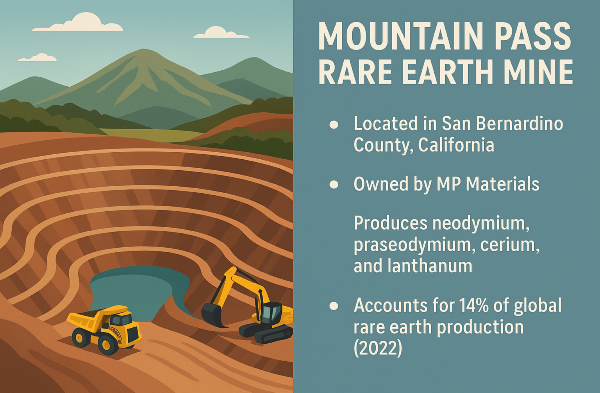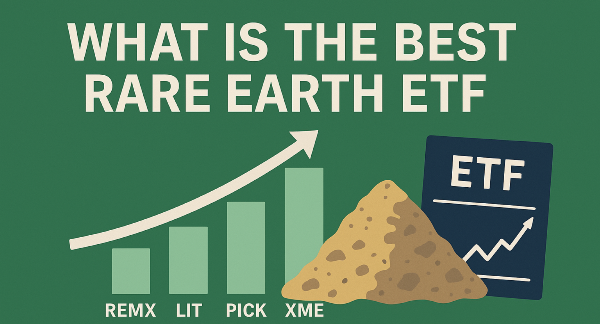Introduction
So, you wanna make money without lifting a finger? Welcome to dividend investing, where companies literally pay you just for owning their stock. Sounds great, right? Well, hold up—before you dive in and buy anything with the word “dividend” in the name, you need a strategy. Picking the right dividend stocks means avoiding financial landmines and choosing companies that actually know how to keep those payouts flowing. Think of it as building a cash-producing machine that works while you sip coffee or sleep. Let’s make sure you don’t screw it up.
Understanding Dividend Stocks
Dividend stocks are basically those golden geese of the stock market—they lay cash eggs at regular intervals. These companies pay out a portion of their profits to shareholders, and boom, you get money just for holding their stock. But not all dividend stocks are created equal. Some are high-yield beasts that throw money at you but might collapse tomorrow. Others steadily grow their dividends over time, like a fine wine. And then there are the blue-chip dividend stocks—big, boring, but consistent. If you like financial stability over lottery-ticket speculation, they’re your best bet.
Key Factors to Consider When Choosing Dividend Stocks
1. Dividend Yield
Dividend yield is like the flashy percentage that gets everyone’s attention. It’s calculated by dividing the annual dividend by the stock price, giving you a rough idea of how much cash you’ll rake in. But here’s the deal: chugging high-yield stocks like energy drinks can be risky. Sure, big yields sound fun, but if a company’s finances are in shambles, those dividends can disappear overnight. Sustainable yields—ones that won’t vanish the second the market sneezes—are where the real money is.
2. Dividend Payout Ratio
The dividend payout ratio tells you how much of a company’s earnings they’re handing over. A low ratio means they’re keeping enough cash to grow while still paying dividends. A high ratio? That’s them giving you all their money now but potentially running out later. If you’re banking on long-term payouts, make sure they’re not bleeding themselves dry just to keep investors happy. Because nothing wrecks a portfolio faster than a stock that suddenly says, “Oops, no more dividends.”
3. Dividend Growth History
A company that regularly increases its dividends is basically flexing its financial muscles. They’re saying, “Yeah, we got money—and we’ll keep giving you more of it.” You can check this using dividend screening tools, financial reports, and, you know, common sense. If a company hasn’t raised its dividend in years, chances are, it’s either struggling or just doesn’t care about rewarding its shareholders. Pick stocks with a history of increasing dividends, and your future self will thank you.
4. Company Fundamentals
A company's fundamentals play a crucial role in determining the sustainability of its dividend payments. Investors should assess key financial health indicators such as revenue stability, earnings consistency, and profitability margins to gauge the company’s ability to maintain and grow dividends. Strong balance sheets, low debt levels, and robust cash flow signify financial resilience, reducing the risk of dividend cuts during economic downturns. Additionally, understanding industry trends and competitive positioning is essential—companies operating in stable, high-demand sectors tend to offer more reliable dividend payouts compared to those in cyclical industries. Evaluating these factors ensures that dividend investors select stocks with a solid foundation for long-term income growth.
5. Dividend Safety & Stability
Dividend safety and stability are equally important, with free cash flow and debt levels serving as critical metrics. Free cash flow—the money a company has left after covering expenses—should be sufficient to support dividend payments and future business investments. Excessive debt can strain a company’s financial flexibility, increasing the risk of dividend reductions or suspensions. Investors often look to Dividend Aristocrats and Dividend Kings—companies with long histories of consistently growing dividends—as benchmarks of dividend reliability. These firms have demonstrated a commitment to rewarding shareholders, making them attractive options for stable income-seeking investors.
Research Methods for Finding the Best Dividend Stocks
Finding the best dividend stocks requires thorough research and access to reliable data sources. Investors should leverage financial reports, earnings calls, and stock screeners to evaluate dividend potential effectively. Dividend stock screening tools, such as those provided by brokerages and investment research platforms, can filter stocks based on yield, payout ratio, and growth history. Additionally, assessing sector diversification within a portfolio is crucial to balancing risk and maximizing income stability. A well-diversified dividend portfolio ensures resilience against market fluctuations, enabling investors to maintain steady cash flow from multiple industries and economic conditions. By using these research methods, dividend investors can make informed, strategic decisions to enhance portfolio performance.
Strategies for Building a Strong Dividend Portfolio
Diversification is key. You don’t want all your dividend stocks in one basket, because if that sector tanks, your income takes a nosedive. Mix it up—grab some healthcare, utilities, tech, and consumer goods. Also, balancing growth stocks with stable dividend players is smart—because while dividends are nice, a stock that also grows in value is even better. Oh, and reinvesting dividends is like turning on the money printer. Let your dividends buy more shares, and watch your portfolio stack up over time.
Common Mistakes to Avoid
Mistake number one? Chasing ridiculous yields without checking if they’re actually sustainable. Just because a company offers a 12% yield doesn’t mean it’s a good investment—it might be on the verge of collapsing. Also, ignoring fundamentals is asking for disaster. If a company can’t consistently turn a profit, those dividends won’t last. And lastly, don’t forget to check in on your stocks now and then. Just because a company was a dividend powerhouse five years ago doesn’t mean it’s still thriving today.
Conclusion
So, if you’ve made it this far, congrats—you now know how to pick dividend stocks like someone who actually knows what they’re doing. Do your research, pick companies that won’t implode, and reinvest those dividends to turn your portfolio into a wealth machine. And hey, don’t get greedy with crazy high yields unless you want to learn financial lessons the hard way. Happy investing!
🚀 Master Dividend Investing – Your Ultimate Guide 💰
Looking to supercharge your portfolio with dividend stocks? 📈 Check out these essential reads:
🏆 Top Dividend Stocks & Strategies
💰 Passive Income & Dividend Power Moves
🔍 How to Pick Winning Dividend Stocks
📊 Dividend Ratios & Metrics
⚡ Dividend Timing & Tax Strategies
🔗 Bookmark this guide & start your dividend wealth journey today! 🚀💸




























Introduction
So, you wanna make money without lifting a finger? Welcome to dividend investing, where companies literally pay you just for owning their stock. Sounds great, right? Well, hold up—before you dive in and buy anything with the word “dividend” in the name, you need a strategy. Picking the right dividend stocks means avoiding financial landmines and choosing companies that actually know how to keep those payouts flowing. Think of it as building a cash-producing machine that works while you sip coffee or sleep. Let’s make sure you don’t screw it up.
Understanding Dividend Stocks
Dividend stocks are basically those golden geese of the stock market—they lay cash eggs at regular intervals. These companies pay out a portion of their profits to shareholders, and boom, you get money just for holding their stock. But not all dividend stocks are created equal. Some are high-yield beasts that throw money at you but might collapse tomorrow. Others steadily grow their dividends over time, like a fine wine. And then there are the blue-chip dividend stocks—big, boring, but consistent. If you like financial stability over lottery-ticket speculation, they’re your best bet.
Key Factors to Consider When Choosing Dividend Stocks
1. Dividend Yield
Dividend yield is like the flashy percentage that gets everyone’s attention. It’s calculated by dividing the annual dividend by the stock price, giving you a rough idea of how much cash you’ll rake in. But here’s the deal: chugging high-yield stocks like energy drinks can be risky. Sure, big yields sound fun, but if a company’s finances are in shambles, those dividends can disappear overnight. Sustainable yields—ones that won’t vanish the second the market sneezes—are where the real money is.
2. Dividend Payout Ratio
The dividend payout ratio tells you how much of a company’s earnings they’re handing over. A low ratio means they’re keeping enough cash to grow while still paying dividends. A high ratio? That’s them giving you all their money now but potentially running out later. If you’re banking on long-term payouts, make sure they’re not bleeding themselves dry just to keep investors happy. Because nothing wrecks a portfolio faster than a stock that suddenly says, “Oops, no more dividends.”
3. Dividend Growth History
A company that regularly increases its dividends is basically flexing its financial muscles. They’re saying, “Yeah, we got money—and we’ll keep giving you more of it.” You can check this using dividend screening tools, financial reports, and, you know, common sense. If a company hasn’t raised its dividend in years, chances are, it’s either struggling or just doesn’t care about rewarding its shareholders. Pick stocks with a history of increasing dividends, and your future self will thank you.
4. Company Fundamentals
A company's fundamentals play a crucial role in determining the sustainability of its dividend payments. Investors should assess key financial health indicators such as revenue stability, earnings consistency, and profitability margins to gauge the company’s ability to maintain and grow dividends. Strong balance sheets, low debt levels, and robust cash flow signify financial resilience, reducing the risk of dividend cuts during economic downturns. Additionally, understanding industry trends and competitive positioning is essential—companies operating in stable, high-demand sectors tend to offer more reliable dividend payouts compared to those in cyclical industries. Evaluating these factors ensures that dividend investors select stocks with a solid foundation for long-term income growth.
5. Dividend Safety & Stability
Dividend safety and stability are equally important, with free cash flow and debt levels serving as critical metrics. Free cash flow—the money a company has left after covering expenses—should be sufficient to support dividend payments and future business investments. Excessive debt can strain a company’s financial flexibility, increasing the risk of dividend reductions or suspensions. Investors often look to Dividend Aristocrats and Dividend Kings—companies with long histories of consistently growing dividends—as benchmarks of dividend reliability. These firms have demonstrated a commitment to rewarding shareholders, making them attractive options for stable income-seeking investors.
Research Methods for Finding the Best Dividend Stocks
Finding the best dividend stocks requires thorough research and access to reliable data sources. Investors should leverage financial reports, earnings calls, and stock screeners to evaluate dividend potential effectively. Dividend stock screening tools, such as those provided by brokerages and investment research platforms, can filter stocks based on yield, payout ratio, and growth history. Additionally, assessing sector diversification within a portfolio is crucial to balancing risk and maximizing income stability. A well-diversified dividend portfolio ensures resilience against market fluctuations, enabling investors to maintain steady cash flow from multiple industries and economic conditions. By using these research methods, dividend investors can make informed, strategic decisions to enhance portfolio performance.
Strategies for Building a Strong Dividend Portfolio
Diversification is key. You don’t want all your dividend stocks in one basket, because if that sector tanks, your income takes a nosedive. Mix it up—grab some healthcare, utilities, tech, and consumer goods. Also, balancing growth stocks with stable dividend players is smart—because while dividends are nice, a stock that also grows in value is even better. Oh, and reinvesting dividends is like turning on the money printer. Let your dividends buy more shares, and watch your portfolio stack up over time.
Common Mistakes to Avoid
Mistake number one? Chasing ridiculous yields without checking if they’re actually sustainable. Just because a company offers a 12% yield doesn’t mean it’s a good investment—it might be on the verge of collapsing. Also, ignoring fundamentals is asking for disaster. If a company can’t consistently turn a profit, those dividends won’t last. And lastly, don’t forget to check in on your stocks now and then. Just because a company was a dividend powerhouse five years ago doesn’t mean it’s still thriving today.
Conclusion
So, if you’ve made it this far, congrats—you now know how to pick dividend stocks like someone who actually knows what they’re doing. Do your research, pick companies that won’t implode, and reinvest those dividends to turn your portfolio into a wealth machine. And hey, don’t get greedy with crazy high yields unless you want to learn financial lessons the hard way. Happy investing!
🚀 Master Dividend Investing – Your Ultimate Guide 💰
Looking to supercharge your portfolio with dividend stocks? 📈 Check out these essential reads:
🏆 Top Dividend Stocks & Strategies
💰 Passive Income & Dividend Power Moves
🔍 How to Pick Winning Dividend Stocks
📊 Dividend Ratios & Metrics
⚡ Dividend Timing & Tax Strategies
🔗 Bookmark this guide & start your dividend wealth journey today! 🚀💸